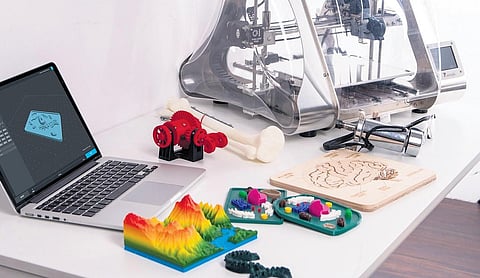

In the realm of modern manufacturing, 3D printing has emerged as a transformative force, revolutionizing the way we conceive and create objects. At the heart of 3D printing lies the principle of additive manufacturing, a departure from conventional subtractive manufacturing methods. Unlike processes that involve cutting, molding, or subtracting material from a larger block, 3D printing builds objects layer by layer. This revolutionary approach not only allows for unparalleled design flexibility but also introduces new possibilities for the creation of intricate and complex geometries.
First off, a digital model is created using Computer-Aided Design (CAD) software which will serve as the blueprint for the physical object to be produced. Designers can manipulate, refine, and customize the 3D model according to specific requirements, enabling a level of precision and detail that traditional manufacturing methods may struggle to achieve.
Once the digital model is perfected, it undergoes a crucial step called slicing, which involves breaking down the 3D model into horizontal layers, each representing a cross-section of the final object. The thickness of these layers is determined by the slicing software, and this information becomes the guiding map for the 3D printer.
Prior to beginning the printing process, the 3D printer requires meticulous calibration and setup. This includes ensuring the print bed is level, the extruder (the component depositing material) is calibrated, and the chosen material (often in the form of filament or resin) is loaded in the printer.
The 3D printing technique employed depends on the type of printer and the intended application. Fused Deposition Modeling (FDM) printers utilize a thermoplastic filament that is heated until molten and then extruded layer by layer onto the printer bed. Stereolithography (SLA) printers use a liquid resin that is selectively cured or solidified by a UV laser or light projector. Selective Laser Sintering (SLS) employs a laser to sinter or fuse powdered material, such as plastic, metal, or ceramic. PolyJet technology deposits layers of liquid photopolymer onto a build tray. Each layer is cured using UV light. In all these techniques, after each layer is deposited and solidified, a cooling period is necessary before the next layer can be added. The time required for cooling depends on the material and is crucial for ensuring the structural integrity of the final object.
Once the printing is complete, the 3D-printed object may undergo post-processing steps. This can involve removing support structures, refining surface finishes, or applying additional treatments to achieve the desired final product.
The applications of 3D printing span a multitude of industries, from healthcare to aerospace, automotive, and consumer goods. Despite its numerous advantages, 3D printing faces challenges such as material limitations, production speed and the need for standardized processes. Researchers and industry professionals are actively trying to address these issues. As technology advances, we can anticipate further innovations in materials, processes and applications.